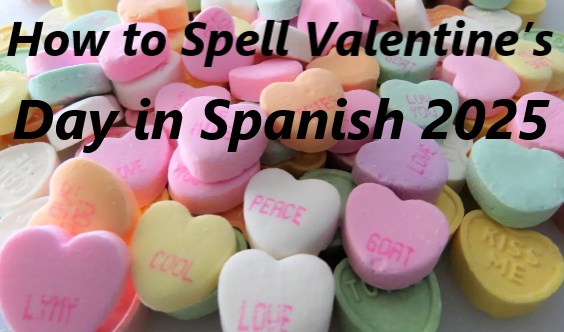Valentine’s Day is a beloved holiday celebrated worldwide, but did you know that it has different names in Spanish-speaking countries? Whether you’re planning to send a romantic message to a Spanish-speaking loved one or simply want to expand your linguistic knowledge, understanding how to spell and say “Valentine’s Day” in Spanish is essential.
1. What Is Valentine’s Day Called in Spanish?
In Spanish, Valentine’s Day is commonly known as:
- Día de San Valentín – This translates directly to “Saint Valentine’s Day.”
- Día del Amor y la Amistad – Meaning “Day of Love and Friendship,” this name is more common in Latin America.
Both names are used interchangeably, depending on the country and context.
2. Proper Spelling of Valentine’s Day in Spanish
If you want to spell “Happy Valentine’s Day” correctly in Spanish, here’s how:
- Feliz Día de San Valentín (Happy Valentine’s Day)
- Feliz Día del Amor y la Amistad (Happy Day of Love and Friendship)
Just like in English, capitalization is important. “Día” (Day) and “San Valentín” (Saint Valentine) should always be capitalized.
3. Why Are There Different Names for Valentine’s Day?
While “Día de San Valentín” is the direct translation, many Latin American countries use “Día del Amor y la Amistad” to emphasize that the day is not just for couples but also for friends and family. This broader interpretation makes the holiday more inclusive and popular among people of all relationship statuses.
4. Common Mistakes When Spelling Valentine’s Day in Spanish
Non-native speakers sometimes make errors when writing “Valentine’s Day” in Spanish. Here are some common mistakes to avoid:
- Incorrect: Día San Valentín ❌ (Missing “de”)
- Incorrect: Día de san valentín ❌ (Lowercase “San Valentín”)
- Incorrect: Feliz día de san valentín ❌ (Only “San Valentín” should be capitalized)
- Correct: Feliz Día de San Valentín ✅
5. How Do You Say Valentine’s Day Greetings in Spanish?
Now that you know how to spell it correctly, let’s look at different ways to wish someone a Happy Valentine’s Day in Spanish:
Romantic Messages:
- Feliz Día de San Valentín, mi amor. (Happy Valentine’s Day, my love.)
- Eres el amor de mi vida. ¡Feliz Día de San Valentín! (You are the love of my life. Happy Valentine’s Day!)
- Cada día contigo es especial, pero hoy es aún más hermoso. ¡Feliz Día de San Valentín! (Every day with you is special, but today is even more beautiful. Happy Valentine’s Day!)
Friendly Messages:
- ¡Feliz Día del Amor y la Amistad! Gracias por ser un amigo increíble. (Happy Day of Love and Friendship! Thank you for being an amazing friend.)
- Hoy celebramos no solo el amor romántico, sino también la amistad verdadera. ¡Feliz Día del Amor y la Amistad! (Today we celebrate not only romantic love but also true friendship. Happy Day of Love and Friendship!)
6. How Different Spanish-Speaking Countries Celebrate Valentine’s Day
While the holiday is widely recognized, different countries have unique traditions:
- Mexico: “Día del Amor y la Amistad” is celebrated with flowers, chocolates, and romantic dinners, much like in the U.S.
- Spain: “Día de San Valentín” is mostly for couples, who exchange gifts and enjoy special dates.
- Colombia: Instead of February 14, Colombians celebrate “Día del Amor y la Amistad” in September with a tradition called “Secret Friend,” similar to Secret Santa.
- Argentina: They celebrate “Semana de la Dulzura” (Sweetness Week) in July, where people exchange kisses for sweets.
7. Fun Ways to Use Your Spanish Valentine’s Day Knowledge in 2025
Now that you know how to spell and say Valentine’s Day in Spanish, here are some fun ways to use your knowledge:
- Write a Spanish Valentine’s card – Surprise your loved one with a heartfelt message in Spanish.
- Post on social media – Share a Valentine’s greeting in Spanish to impress your friends.
- Learn a romantic Spanish phrase – Try saying “Te quiero” (I love you) or “Eres mi todo” (You are my everything).
Now go ahead and spread the love—¡Feliz Día de San Valentín! ❤️





